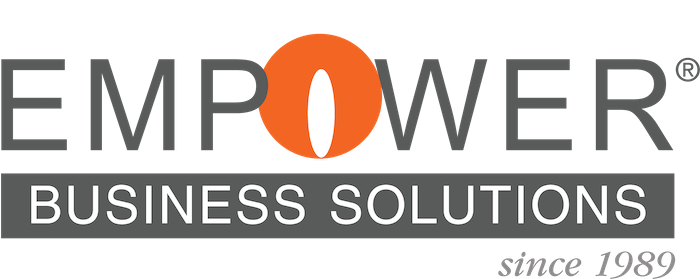For SMBs ($25M-$150M revenue) navigating digital transformation, cloud ERP adoption represents both an operational necessity and a strategic growth accelerator. Acumatica’s dominance in Nucleus Research’s 2024 SMB ERP Value Matrix underscores its effectiveness in addressing sector-specific challenges through AI-enhanced workflows and real-time operational visibility.
Yet, many companies struggle with the transition from outdated, disconnected systems. The hidden costs of inefficient processes (manual data entry, integration workarounds, and data silos) can significantly impact a company’s bottom line.
This blog explores the hidden costs of disconnected tools and how Acumatica’s AI-enhanced ERP automates processes, eliminates inefficiencies, and optimizes business performance. Rather than simply layering AI onto existing features, their approach starts at the foundation—developing AI solutions that directly address real-world challenges. This results in intelligent, seamlessly integrated capabilities tailored to fit the unique workflows and demands of mid-sized businesses.
The Hidden Costs of Disconnected Systems
Manual Data Entry & Duplication: Wasted Time and Increased Errors
Disconnected systems often require manual data entry, leading to time-consuming processes and a higher likelihood of errors. A 2024 Protelo study found that businesses using disconnected legacy systems spent up to 30% more time reconciling financials compared to those using cloud ERP solutions. The risk of errors increases, leading to operational inefficiencies, compliance risks, and inaccurate reporting.
Acumatica’s AI capabilities automate data entry tasks, such as automatically creating accounts payable documents from vendor bills. This reduces the manual workload and minimizes errors, allowing businesses to improve efficiency without sacrificing accuracy.
Lack of Real-Time Insights: Delays in Decision-Making
Without integrated systems, obtaining up-to-date information is challenging, hindering timely decision-making. Acumatica’s embedded Power BI integration enables instant gross margin analysis, but only 33% of SMBs fully utilize AI-driven demand forecasting despite having access.
By integrating AI, Acumatica provides real-time data extraction and anomaly detection, enabling businesses to quickly identify trends, reduce errors in financial reporting, and make informed decisions faster. This ensures that companies are not relying on outdated or incomplete data to guide their strategies.
Poor Collaboration Across Departments: Fragmented Communication
When finance, sales, and operations use separate tools, communication gaps arise. Teams waste time reconciling inconsistent data, leading to delays and misaligned strategies.
Acumatica’s AI-driven platform centralizes data, facilitating seamless communication and collaboration across departments. AI-powered automation ensures that changes made in one department are reflected across all relevant teams in real-time, eliminating manual reconciliation efforts.
Integration Workarounds: Custom Solutions Cost Money and Resources
Custom integrations between disparate systems can be costly and require ongoing maintenance. While Acumatica offers more than 260 prebuilt connectors (e.g., Salesforce, Shopify), businesses relying on niche industry tools often face integration debt, the ongoing cost of maintaining custom API connections.
Acumatica’s AI capabilities are built directly into its cloud ERP platform, eliminating the need for custom integrations and reducing associated costs. AI helps businesses automatically detect integration issues and resolve them without extensive IT intervention, ensuring a seamless flow of data across applications.
Hidden Costs of Legacy System Maintenance
Acumatica’s consumption-based pricing attracts CFOs with predictable OpEx, but Tayana Solutions’ 2025 audit revealed that 68% of SMBs underestimate:
- Data cleansing expenses ($18-$25K per TB)
- Change management training (140-220 hours)
- Legacy system decommissioning penalties
AI-powered ERP addresses these hidden costs by streamlining migration processes, automating data validation, and optimizing system configurations based on real-time operational needs. This reduces long-term expenses and accelerates the transition from outdated workflows.
How ERP Integration with AI Solves These Challenges
Centralized Data & Real-Time Visibility
ERP systems eliminate silos by consolidating data from finance, sales, and inventory into a single platform. AI further enhances this by automating data classification, flagging inconsistencies, and ensuring real-time access to accurate business insights.
Automation of Workflows
Modern ERP automates repetitive processes like invoicing, financial close, and order management. Businesses that transition from QuickBooks to ERP often see a 50 to 70% reduction in manual data entry, freeing up employees to focus on strategic initiatives. AI expands on this by learning workflow patterns and making recommendations for optimization.
Seamless Third-Party Integrations
Instead of relying on disjointed software, an ERP system like Acumatica provides prebuilt integrations with popular tools. AI ensures these integrations run smoothly by automatically adjusting data mappings and flagging inconsistencies before they cause system disruptions.
Scalability for Future Growth
Acumatica’s resource-based licensing model allows SMBs to pay for computing power rather than per-user fees, a critical advantage for companies projecting 20 to 50% annual growth. However, 42% of SMBs in a 2024 Protelo study underestimated the operational impact of modular add-ons, struggling to align feature adoption timelines with departmental readiness.
With AI-driven insights, businesses can forecast when additional resources or system upgrades are needed, avoiding unnecessary costs while ensuring scalability.
Regulatory Compliance and Risk Management
Acumatica’s construction and manufacturing editions include preconfigured compliance templates for ASC 606 revenue recognition and FDA 21 CFR Part 11. However, multi-state retailers often require customizations. For example, WM Synergy’s 2025 implementation for a 35-location pharmacy chain needed 14 state-specific tax rule overrides.
AI-powered ERP ensures compliance by continuously monitoring regulatory changes, automatically updating policies, and generating audit-ready reports to reduce risk exposure.
Conclusion
For SMBs approaching the $100M revenue inflection point, AI-powered ERP is not just about upgrading software, it’s about strategic business transformation. Acumatica’s AI-enhanced analytics and industry-specific agility provide a strong foundation for growth, but success depends on rigorous self-assessment of integration debt, data literacy gaps, and total cost of ownership.
Leaders who frame ERP transitions as continuous adaptation cycles rather than one-time IT projects will disproportionately capture the 14 to 22% EBITDA improvements observed in benchmark adopters.
The question is not whether to migrate, but how to structure the journey so AI-powered ERP capabilities evolve in lockstep with market ambitions.
